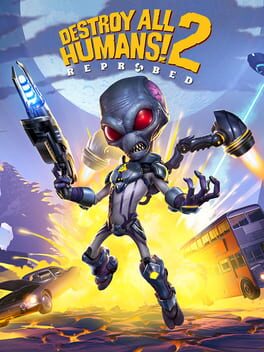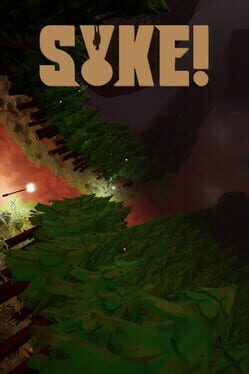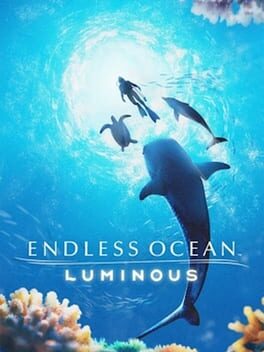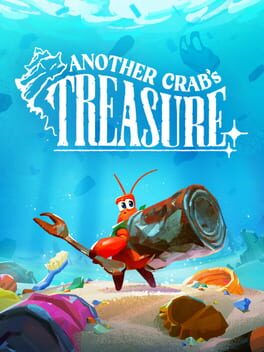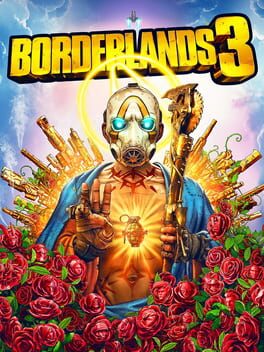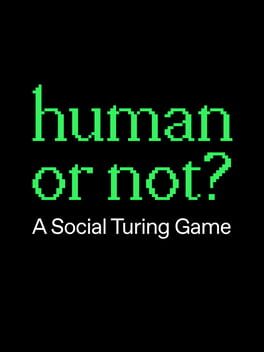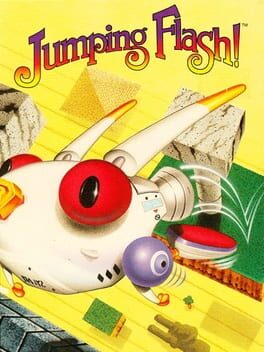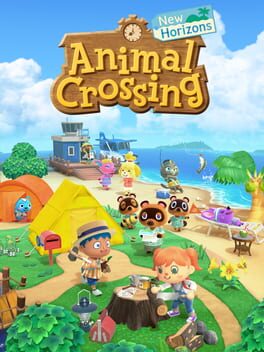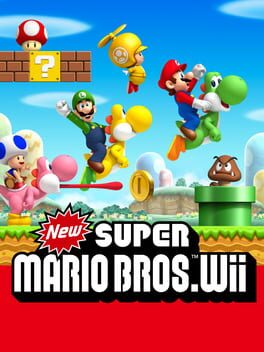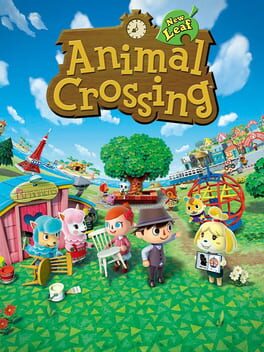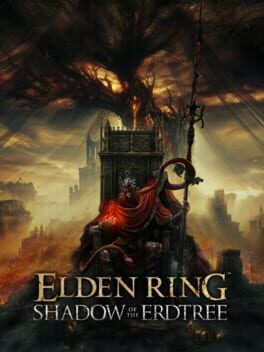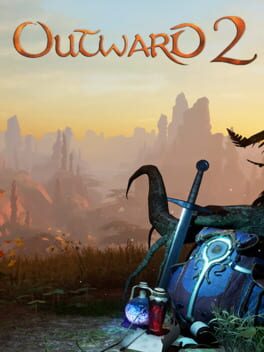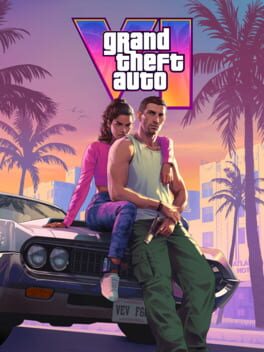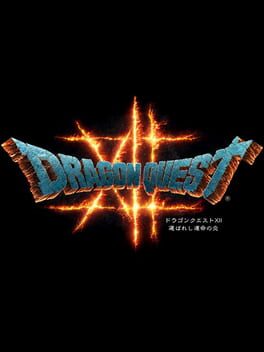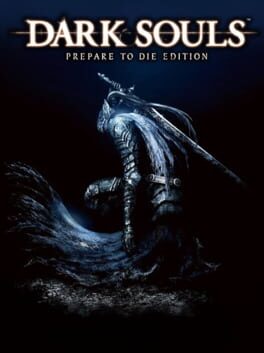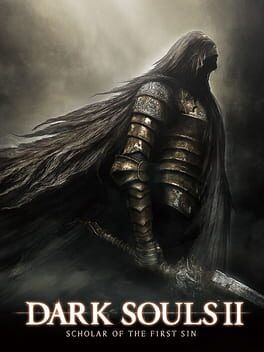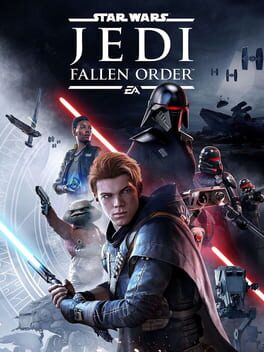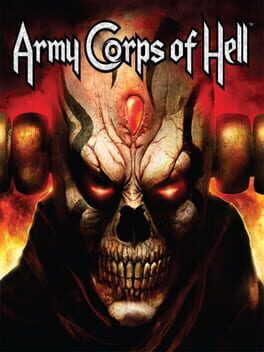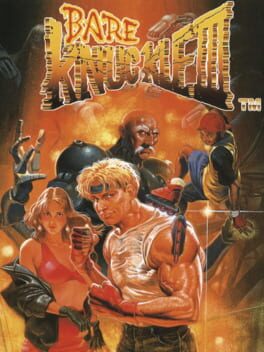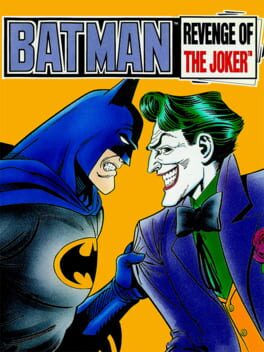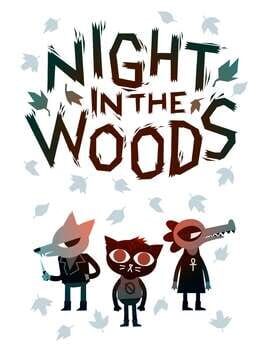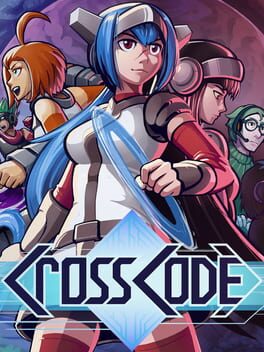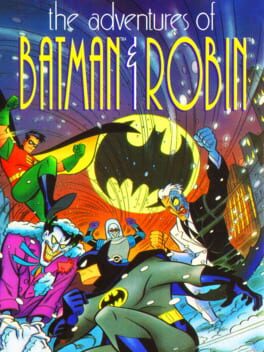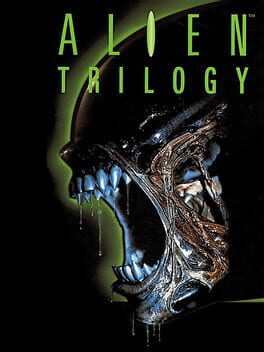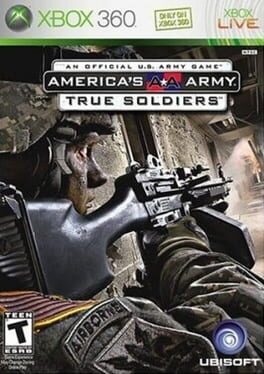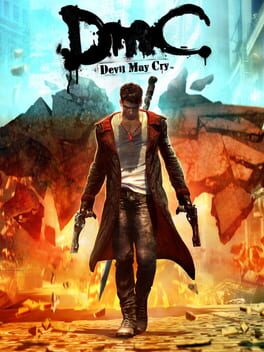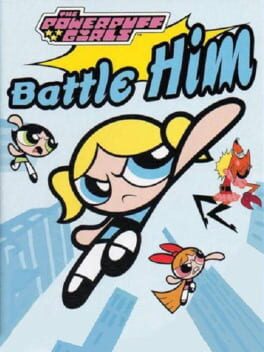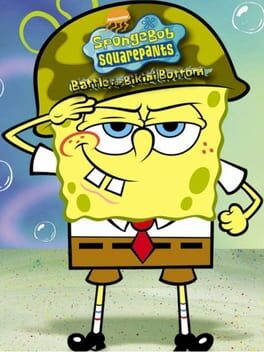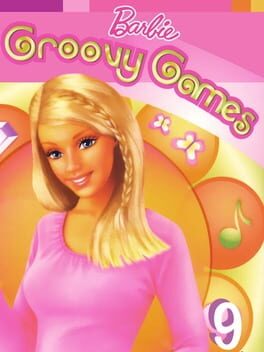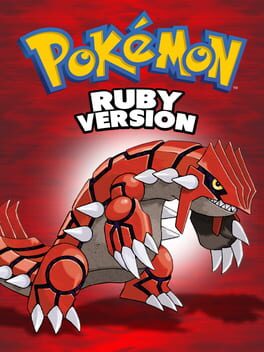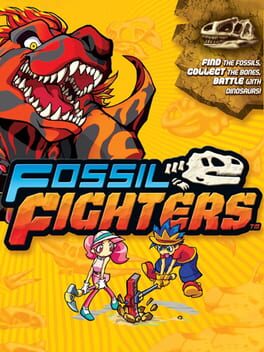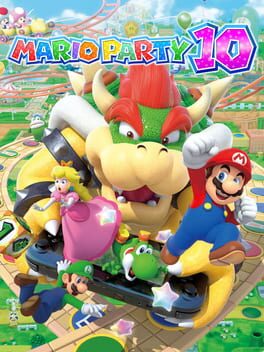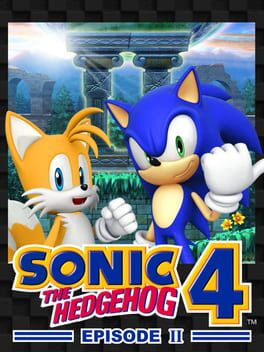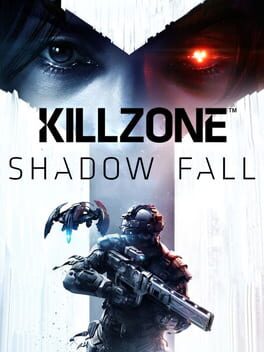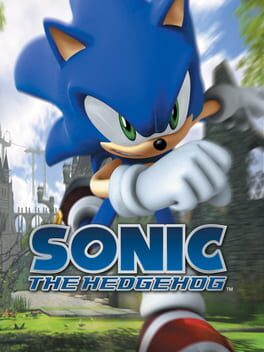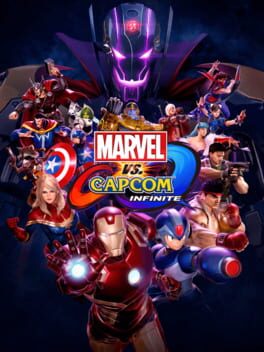moschidae
3932 reviews liked by moschidae
I'm so used to remakes/remasters trying to put a full face of makeup on a pig that I'm actually really glad this game still fucking sucks in all the ways it did when I was a little Mira.
For better or worse, this is just lipstick on the pig. Yeah it looks prettier so it can be sold to single-cell entities that refuse games that look older than 2018, but it's ultimately Destroy All Humans 2 at its core.
It still has that same awful sense of humor, using one of three jokes: Haha weed! Haha sex! Haha cold war! Rinse, repeat, try not to cringe at the racial stereotypes in the Japan level, hope you liked Austin Powers and alarming levels of barefaced misogyny.
It still plays like ass, having floaty and impactless combat where your best option for 99% of the game's runtime is the Disintegrator. Missions are, once again, either total cakewalks or annoying gimmicks with a lot of pointless "go from A to B" that makes GTAV look restrained.
And, naturally, the hollow open levels have returned. If you've ever had a craving for empty open spaces with nothing in them but missions and the odd collectable, DAH2R is a lovely portal that lets you experience them but from the PS2 era.
There are some bits that're better; on the whole it handles a lot more smoothly, they cut that one transphobic mission (mercifully) and a lot of the QoL improvements were ported over from the last remake. Plus, despite what I said up above about the missions, some (not all) were made less irritating from their PS2 incarnation.
...But you're still playing Destroy All Humans 2.
This game was dated when it came out, and it came out on a platform where about 3/4 of the releases from North America ended up dated later down the line. If you have no nostalgia for it, stay clear. Go play Saints Row 2 or something.
For better or worse, this is just lipstick on the pig. Yeah it looks prettier so it can be sold to single-cell entities that refuse games that look older than 2018, but it's ultimately Destroy All Humans 2 at its core.
It still has that same awful sense of humor, using one of three jokes: Haha weed! Haha sex! Haha cold war! Rinse, repeat, try not to cringe at the racial stereotypes in the Japan level, hope you liked Austin Powers and alarming levels of barefaced misogyny.
It still plays like ass, having floaty and impactless combat where your best option for 99% of the game's runtime is the Disintegrator. Missions are, once again, either total cakewalks or annoying gimmicks with a lot of pointless "go from A to B" that makes GTAV look restrained.
And, naturally, the hollow open levels have returned. If you've ever had a craving for empty open spaces with nothing in them but missions and the odd collectable, DAH2R is a lovely portal that lets you experience them but from the PS2 era.
There are some bits that're better; on the whole it handles a lot more smoothly, they cut that one transphobic mission (mercifully) and a lot of the QoL improvements were ported over from the last remake. Plus, despite what I said up above about the missions, some (not all) were made less irritating from their PS2 incarnation.
...But you're still playing Destroy All Humans 2.
This game was dated when it came out, and it came out on a platform where about 3/4 of the releases from North America ended up dated later down the line. If you have no nostalgia for it, stay clear. Go play Saints Row 2 or something.
Syke!
TBD
Man. I love fish, I love animals, I love taking pictures of both of these, and I loved Endless Ocean on the Wii. This game is not like the originals. I started this game with a higher opinion of this than I think a lot of people, it was fun, kind of clunky mechanically, but the core was strong enough to be a good time. The more I played though, the more baffling decisions I encountered. There’s so many axed modes and features from the Wii game that this feels like if you ported the idea to an iPhone game more than a third entry of the Endless Ocean series, which sucks. I got my money’s worth out of it, and overall it’s fine, the features cut are things I could overlook if the game was as good as the originals and it’s just not. Not to mention, I have encountered so many glitches that halt progression, and even gotten softlocked out of the ending from what I can tell because one of the items I need to complete the 99 tasks you have to do to pad the game out to hell and back just didn’t spawn in the already rare randomly generated formation, all of this just makes me wonder how this game was okayed in the state it’s in, missing any of the typical “shine” from a Nintendo published title, with things that scream a lack of QA testing.
Overall the lack of an aquarium mode the change to randomly generated maps from set maps, making exploration a lot more tedious to get what you want, and just lack of good QOL features… makes the game all in all very disappointing.
Overall the lack of an aquarium mode the change to randomly generated maps from set maps, making exploration a lot more tedious to get what you want, and just lack of good QOL features… makes the game all in all very disappointing.
Played 2 hours and realized I just was not having any fun. I don't particularly like the weapon (his attack animations/feel). I have problems timing the parry and the dodge to the attack animations. I love big shields in Dark Souls, but that feeling is NOT the same as shielding in this game. I dont like that the first area is just a open area with some "ruins".
I got to the second area (a big safe zone city) and all my exploration drive went away. I do not want to hear any more talking, I don't want to explore anymore so I just quit.
Yeah I think the artstyle, setting, and music is a good change of pace for Souls-likes, but it I don;t like the combat so 👎
I got to the second area (a big safe zone city) and all my exploration drive went away. I do not want to hear any more talking, I don't want to explore anymore so I just quit.
Yeah I think the artstyle, setting, and music is a good change of pace for Souls-likes, but it I don;t like the combat so 👎
In Sound Mind
2021
"Curiosity killed the uncool cat, ya dig?" - Chad Ghostal
Stop me if you've heard this one before: a first-person horror game where your character wakes up in an abandoned building and has to solve paint-by-numbers puzzles while armed with a flashlight that has limited battery power.
In Sound Mind makes a poor first impression, its opening oddly lifeless for a game touting the collaboration of The Living Tombstone and presenting itself with psychedelic cover art. However, as I got my bearings in its first hour, hunting down a cassette tape that would whisk me away to its first proper level, I remained hopeful that the game would make good on its promise. I pet my cat before I left and got a trophy, "GOTY 10/10." Bad sign.
Protagonist Desmond Wales is as poor a therapist as he is a pet owner, inviting poisonous plants into his home and staring out the window while his patients doom spiral. Now you have to repair their broken psyches and give them closure while unraveling a conspiracy involving the highly psychoactive drug Agent Rainbow, which led to their deaths. What this means from a gameplay perspective is that each level centers around a specific patient in a location pertinent to them, such as... an abandoned grocery store. An abandoned lighthouse. An abandoned factory. An abandoned military base. This may all be the doing of Agent Rainbow, but each of these locations are drab, downright colorless both in aesthetic and flavor, occupied only by cookie-cutter enemies (of which there are three variants through the whole game) and uninspired puzzles.
Desmond's patients also haunt their respective levels, having mutated after succumbing to their inner-demons. You can't just shoot them like your typical fodder-type enemies and will need to employ more inventive methods to counteract them, with most of these encounters doubling as a means to solve environmental puzzles, like luring Max Nygaard - now a disembodied mechanical bull head - into breakable walls.
The problem is that much like all the other puzzles you run into, once the solution has been presented to you, you're expected to repeat it ad infinitum. Shining a light to scare away Allen Shore (nice Alan Wake reference) loses all its tension when you find yourself doing it a dozen different times, never once iterating on the mechanic after its introduction. The third level has you ferrying three CPUs between power panels to unlock doors, and by that point I became conditioned enough to know that would be my main method of progression through the next two hours of game. Everything you're tasked with feels like it was written out for you on a torn piece of notebook paper and stuck to the fridge, just a list of chores no more engaging than taking out the trash.
Speaking of trash: this game's performance. Something about open environments is incredibly disagreeable with the framerate, and unfortunately most of In Sound Mind takes place outdoors, so the game is constantly choking to death. It also has a tendency to checkpoint you in the middle of hazards, nearly locking me in a death loop once as I was stuck respawning on top of a toxic puddle while getting hit by an enemy with 30% of my HP remaining. I managed to wriggle my way out of that after multiple attempts, despawn the mob, and then ate a candy bar which made Desmond go "Nom~" in a cutesy voice. Almost shut the game off there.
And I wish I had, because In Sound Mind's technical problems ultimately resulted in the game becoming unbeatable. During the last leg of the final boss, all objects became non-interactive, something that permeated through several earlier saves and which could not be resolved by restarting the app or the console. Just locking me minutes from rolling credits, something it could've had the decency to do hours earlier. I don't normally rate games I abandon, but considering the conditions under which I did and how close I was at the end, I'm comfortable giving this a 1/5. Would've clocked it at a 2/5 before that.
We Create Stuff is an aptly named studio, because "stuff" is such a vague, "whatever" term for an end product that there's no promise of it being worthwhile. In Sound Mind is just that, a cobbled together collection of rote design elements scraped off the bottom of the first-person horror barrel, served up with no imagination, neither invested in saying anything or being fun, it's just stuff. Great job, guys.
Stop me if you've heard this one before: a first-person horror game where your character wakes up in an abandoned building and has to solve paint-by-numbers puzzles while armed with a flashlight that has limited battery power.
In Sound Mind makes a poor first impression, its opening oddly lifeless for a game touting the collaboration of The Living Tombstone and presenting itself with psychedelic cover art. However, as I got my bearings in its first hour, hunting down a cassette tape that would whisk me away to its first proper level, I remained hopeful that the game would make good on its promise. I pet my cat before I left and got a trophy, "GOTY 10/10." Bad sign.
Protagonist Desmond Wales is as poor a therapist as he is a pet owner, inviting poisonous plants into his home and staring out the window while his patients doom spiral. Now you have to repair their broken psyches and give them closure while unraveling a conspiracy involving the highly psychoactive drug Agent Rainbow, which led to their deaths. What this means from a gameplay perspective is that each level centers around a specific patient in a location pertinent to them, such as... an abandoned grocery store. An abandoned lighthouse. An abandoned factory. An abandoned military base. This may all be the doing of Agent Rainbow, but each of these locations are drab, downright colorless both in aesthetic and flavor, occupied only by cookie-cutter enemies (of which there are three variants through the whole game) and uninspired puzzles.
Desmond's patients also haunt their respective levels, having mutated after succumbing to their inner-demons. You can't just shoot them like your typical fodder-type enemies and will need to employ more inventive methods to counteract them, with most of these encounters doubling as a means to solve environmental puzzles, like luring Max Nygaard - now a disembodied mechanical bull head - into breakable walls.
The problem is that much like all the other puzzles you run into, once the solution has been presented to you, you're expected to repeat it ad infinitum. Shining a light to scare away Allen Shore (nice Alan Wake reference) loses all its tension when you find yourself doing it a dozen different times, never once iterating on the mechanic after its introduction. The third level has you ferrying three CPUs between power panels to unlock doors, and by that point I became conditioned enough to know that would be my main method of progression through the next two hours of game. Everything you're tasked with feels like it was written out for you on a torn piece of notebook paper and stuck to the fridge, just a list of chores no more engaging than taking out the trash.
Speaking of trash: this game's performance. Something about open environments is incredibly disagreeable with the framerate, and unfortunately most of In Sound Mind takes place outdoors, so the game is constantly choking to death. It also has a tendency to checkpoint you in the middle of hazards, nearly locking me in a death loop once as I was stuck respawning on top of a toxic puddle while getting hit by an enemy with 30% of my HP remaining. I managed to wriggle my way out of that after multiple attempts, despawn the mob, and then ate a candy bar which made Desmond go "Nom~" in a cutesy voice. Almost shut the game off there.
And I wish I had, because In Sound Mind's technical problems ultimately resulted in the game becoming unbeatable. During the last leg of the final boss, all objects became non-interactive, something that permeated through several earlier saves and which could not be resolved by restarting the app or the console. Just locking me minutes from rolling credits, something it could've had the decency to do hours earlier. I don't normally rate games I abandon, but considering the conditions under which I did and how close I was at the end, I'm comfortable giving this a 1/5. Would've clocked it at a 2/5 before that.
We Create Stuff is an aptly named studio, because "stuff" is such a vague, "whatever" term for an end product that there's no promise of it being worthwhile. In Sound Mind is just that, a cobbled together collection of rote design elements scraped off the bottom of the first-person horror barrel, served up with no imagination, neither invested in saying anything or being fun, it's just stuff. Great job, guys.
Pikmin
2001
The secret behind Pikmin’s success was not that it somehow outclassed classic real-time strategy franchises, but rather that it was never competing with them to begin with. According to Shigeru Miyamoto, he came up with the idea for Pikmin one day when he observed a group of ants carrying leaves together into their nest. Miyamoto then imagined a game focused on cooperation rather than competition; he asked, “Why can’t everyone just move together in the same direction, carrying things as a team?” Nintendo EAD’s design philosophy went along with this line of reasoning, melding design mechanics from different genres to create an entirely new yet familiar experience. As a result, instead of competing against other players in Pikmin akin to classic RTS games, Pikmin forces players to explore and compete with the very environment itself by introducing puzzle-exploration and survival mechanics. It made sense in the end; after all, real-time strategy is concerned with minimizing time spent to get a competitive edge over opponents, and what better way to translate this than to force players to master their understanding over the terrain itself, managing and optimizing the one resource which governs them all?
Perhaps Nintendo’s greatest challenge was figuring out how to translate a genre considered by many to be niche and technical to an intuitive yet layered game, and even more so, translating classic actions from a mouse and keyboard allowing for such complexity to a suite of simplified controls using a gamepad. Coming from the other side as someone who played Starcraft as a kid and didn’t get into Pikmin until recently however, I’m surprised at how well EAD’s tackled this endeavor. Classic RTS games focus upon base-building and resource gathering through the micromanagement of units. Pikmin’s take upon this is to introduce a dichotomy between the player character Captain Olimar, who is incapable of doing anything by himself but can issue commands to the units only he can create by plucking out of the soil, and the Pikmin, who are essentially brainless but represent the units that must do everything. The player as Olimar must be present to figure out exactly how to best traverse and exploit the environment around him (replacing the base-building with management/prioritization puzzles) while the Pikmin provide bodies to construct, move, and attack the world around them. However, the Pikmin’s AI is fairly limited and as a result, Pikmin will sit around helplessly once they finish their actions and often get distracted by nearby objects while moving around, which is where the micromanagement kicks in. Therefore, the player has to decide how to best build up their supply of Pikmin to allocate tasks to surmount bottlenecks while exploring and opening the world, all while working against the limited thirty-day timer throughout the game’s five areas.
A part of me expected to really struggle with the gamepad while playing Pikmin, but the available actions on offer allow for a surprising degree of control despite the simplification. For instance, consider Olimar’s whistle; as a substitution for dragging and clicking to select units on PC, the whistle on the GameCube lets Olimar quickly rally groups of clustered units. Holding down B for longer allows the player to increase the size of the whistle’s AOE, which allows the player to better control and target how many Pikmin to rally in any cluster (hence, the analog of clicking and dragging to select boxes of units on mouse and keyboard). The Swarm command is another interesting translation. The obvious use is to allow Olimar to quickly move nearby Pikmin by directing them with the C-stick versus needing to aim and throw them by positioning and rotating Olimar himself. However, because it can be used to shift the position of Pikmin with respect to Olimar, it can also be used to swap the Pikmin on-deck for throwing (since Olimar will always throw the Pikmin closest to him) without needing to dismiss and re-rally separated Pikmin colors, and most importantly, it allows you to directly control the group of Pikmin following Olimar while moving Olimar himself. This second application allows the player to kite the Pikmin around telegraphed enemy attacks, and properly funnel them so the Pikmin aren’t getting as easily stuck behind walls or falling off ledges/bridges into hazards. That said, noticeable control limitations do exist. Olimar cannot pivot to move the reticle without changing his position with respect to the Pikmin around him, which can make aiming in place annoying if the Pikmin types you need to throw aren’t close enough to be moved next to Olimar with Swarm. Additionally, there is no way for Olimar to simultaneously and directly control multiple separated groups of Pikmin, which does make allocating tasks a bit slower. However, given that the tasks themselves usually don’t necessitate more than one Pikmin type at a time, this limitation is understandable, especially since the sequels would tackle this challenge with more expansive controls and multiple playable characters on the field.
Pikmin’s base model as a result is a fantastic translation of an abstract design philosophy, but I can’t help but wonder if the original could have been pushed further. Don’t misunderstand me: I absolutely take pride in mastering a game by learning all about its inner workings and pushing its mechanics to the limits simply by following a few intuitive genre principles. As such, I wish that the game was a bit harder in order to really force me to squeeze every bit of time from the game’s solid premise. For example, combat is often optional in Pikmin given how many full-grown Bulborbs are found sleeping, but given that most enemies don’t respawn within the next day after killing them and I can bring their carcasses back to base to more than replenish my Pikmin supply, combat is almost always in my favor, especially since certain enemies will spawn more mobs if they aren’t defeated. If circumstances existed where it would be unfavorable to engage (such as losing a significant number of Pikmin every time, or having so little time left that engaging would waste time), then I feel that this would add an additional layer of decision-making of deciding when to sneak past sleeping Bulborbs rather than just wiping out as many foes as I could as soon as possible. In a similar sense, I felt that certain design elements such as the Candypop Buds for switching Pikmin colors were a bit underutilized; outside of one environmental puzzle, I never had to use the Candypop Buds, mainly because I had so many remaining Pikmin and time to never justify their usage. I’ll concede here that Pikmin’s one-day Challenge Mode does at least provide a score attack sandbox where I’m forced to take my Pikmin stock and remaining time into higher consideration, but it’s missing the connectivity of the main story mode where my earlier actions would greatly affect how I planned later days in a run, particularly in making judgement calls on which days to spend at each site and which days I dedicate towards building up my Pikmin numbers versus hauling in ship parts. Regardless, I found myself completing the main game with all parts in just twenty days on my first run with minimal resets, and I’d love to try a harder difficulty mode with a stricter time limit and tougher Pikmin margins to really force me to better conserve my working force and dedicate more time to restocking my supply.
Gripes aside, I’m glad that my friends finally convinced me to try out Pikmin, not just to better appreciate RTS games as a whole but to also gain an appreciation of how different genre mechanics can work in tandem to intuitively convey concepts without spelling everything out to the player. It’s classic Nintendo at their core, and while I had my reservations coming in as a fan of older RTS franchises, they’ve managed to convince me once again that the best hook is not simply offering something that’s visibly better, but rather offering something that’s visibly different. I still think that there’s improvement to be had, but given how much I’ve enjoyed the first game, I can’t wait to see what they have to offer from iterating upon their memorable beginnings.
Perhaps Nintendo’s greatest challenge was figuring out how to translate a genre considered by many to be niche and technical to an intuitive yet layered game, and even more so, translating classic actions from a mouse and keyboard allowing for such complexity to a suite of simplified controls using a gamepad. Coming from the other side as someone who played Starcraft as a kid and didn’t get into Pikmin until recently however, I’m surprised at how well EAD’s tackled this endeavor. Classic RTS games focus upon base-building and resource gathering through the micromanagement of units. Pikmin’s take upon this is to introduce a dichotomy between the player character Captain Olimar, who is incapable of doing anything by himself but can issue commands to the units only he can create by plucking out of the soil, and the Pikmin, who are essentially brainless but represent the units that must do everything. The player as Olimar must be present to figure out exactly how to best traverse and exploit the environment around him (replacing the base-building with management/prioritization puzzles) while the Pikmin provide bodies to construct, move, and attack the world around them. However, the Pikmin’s AI is fairly limited and as a result, Pikmin will sit around helplessly once they finish their actions and often get distracted by nearby objects while moving around, which is where the micromanagement kicks in. Therefore, the player has to decide how to best build up their supply of Pikmin to allocate tasks to surmount bottlenecks while exploring and opening the world, all while working against the limited thirty-day timer throughout the game’s five areas.
A part of me expected to really struggle with the gamepad while playing Pikmin, but the available actions on offer allow for a surprising degree of control despite the simplification. For instance, consider Olimar’s whistle; as a substitution for dragging and clicking to select units on PC, the whistle on the GameCube lets Olimar quickly rally groups of clustered units. Holding down B for longer allows the player to increase the size of the whistle’s AOE, which allows the player to better control and target how many Pikmin to rally in any cluster (hence, the analog of clicking and dragging to select boxes of units on mouse and keyboard). The Swarm command is another interesting translation. The obvious use is to allow Olimar to quickly move nearby Pikmin by directing them with the C-stick versus needing to aim and throw them by positioning and rotating Olimar himself. However, because it can be used to shift the position of Pikmin with respect to Olimar, it can also be used to swap the Pikmin on-deck for throwing (since Olimar will always throw the Pikmin closest to him) without needing to dismiss and re-rally separated Pikmin colors, and most importantly, it allows you to directly control the group of Pikmin following Olimar while moving Olimar himself. This second application allows the player to kite the Pikmin around telegraphed enemy attacks, and properly funnel them so the Pikmin aren’t getting as easily stuck behind walls or falling off ledges/bridges into hazards. That said, noticeable control limitations do exist. Olimar cannot pivot to move the reticle without changing his position with respect to the Pikmin around him, which can make aiming in place annoying if the Pikmin types you need to throw aren’t close enough to be moved next to Olimar with Swarm. Additionally, there is no way for Olimar to simultaneously and directly control multiple separated groups of Pikmin, which does make allocating tasks a bit slower. However, given that the tasks themselves usually don’t necessitate more than one Pikmin type at a time, this limitation is understandable, especially since the sequels would tackle this challenge with more expansive controls and multiple playable characters on the field.
Pikmin’s base model as a result is a fantastic translation of an abstract design philosophy, but I can’t help but wonder if the original could have been pushed further. Don’t misunderstand me: I absolutely take pride in mastering a game by learning all about its inner workings and pushing its mechanics to the limits simply by following a few intuitive genre principles. As such, I wish that the game was a bit harder in order to really force me to squeeze every bit of time from the game’s solid premise. For example, combat is often optional in Pikmin given how many full-grown Bulborbs are found sleeping, but given that most enemies don’t respawn within the next day after killing them and I can bring their carcasses back to base to more than replenish my Pikmin supply, combat is almost always in my favor, especially since certain enemies will spawn more mobs if they aren’t defeated. If circumstances existed where it would be unfavorable to engage (such as losing a significant number of Pikmin every time, or having so little time left that engaging would waste time), then I feel that this would add an additional layer of decision-making of deciding when to sneak past sleeping Bulborbs rather than just wiping out as many foes as I could as soon as possible. In a similar sense, I felt that certain design elements such as the Candypop Buds for switching Pikmin colors were a bit underutilized; outside of one environmental puzzle, I never had to use the Candypop Buds, mainly because I had so many remaining Pikmin and time to never justify their usage. I’ll concede here that Pikmin’s one-day Challenge Mode does at least provide a score attack sandbox where I’m forced to take my Pikmin stock and remaining time into higher consideration, but it’s missing the connectivity of the main story mode where my earlier actions would greatly affect how I planned later days in a run, particularly in making judgement calls on which days to spend at each site and which days I dedicate towards building up my Pikmin numbers versus hauling in ship parts. Regardless, I found myself completing the main game with all parts in just twenty days on my first run with minimal resets, and I’d love to try a harder difficulty mode with a stricter time limit and tougher Pikmin margins to really force me to better conserve my working force and dedicate more time to restocking my supply.
Gripes aside, I’m glad that my friends finally convinced me to try out Pikmin, not just to better appreciate RTS games as a whole but to also gain an appreciation of how different genre mechanics can work in tandem to intuitively convey concepts without spelling everything out to the player. It’s classic Nintendo at their core, and while I had my reservations coming in as a fan of older RTS franchises, they’ve managed to convince me once again that the best hook is not simply offering something that’s visibly better, but rather offering something that’s visibly different. I still think that there’s improvement to be had, but given how much I’ve enjoyed the first game, I can’t wait to see what they have to offer from iterating upon their memorable beginnings.
Borderlands 3
2019
It has been like pulling teeth trying to complete this game for the past 5(?) years. I was a day one purchaser, big fan of Gearbox’s only good franchise, and on paper Borderlands 3 should be great - but Ive been just so impossibly bored. Ive spent a long time wondering why… and I think I figured it out: for a game thats called “Borderlands 3”, it sure doesnt feel like its really about The Borderlands anymore, does it?
Maybe its strayed too far from home. It seems the bigger Gearbox makes the bottle, the more they let the lightning out. As much as I hate Pandoras sometimes monotonous beige desert feel, I think Borderlands used to represent a specific kind of space-western vibe. The harsh trappings of the desperado wasteland, mixed with the exotic qualities of alien wildlife, made into a comically deranged satire of a Mad Maxian society. Without that, what is it a satire of? What satire is happening when you plug the Ice-T teddy bear into the navigation of your colony ship?
The game calls you Vault Hunter alot but did it ever feel like you were hunting or searching for anything? What were you, then?
Maybe its strayed too far from home. It seems the bigger Gearbox makes the bottle, the more they let the lightning out. As much as I hate Pandoras sometimes monotonous beige desert feel, I think Borderlands used to represent a specific kind of space-western vibe. The harsh trappings of the desperado wasteland, mixed with the exotic qualities of alien wildlife, made into a comically deranged satire of a Mad Maxian society. Without that, what is it a satire of? What satire is happening when you plug the Ice-T teddy bear into the navigation of your colony ship?
The game calls you Vault Hunter alot but did it ever feel like you were hunting or searching for anything? What were you, then?
Human or Not?
2023
So, I'll admit, I did, a couple nights ago as of writing this, briefly play Human or Not? despite knowing it was AI and, although I wasn't certain, I could guess it probably would contribute to teaching the AI, which by itself can lead to unsavory consequences. I should have known better and shouldn't have contributed. If it makes you feel better, it wasn't even fun and was overall underwhelming; whether it's a bot or a human, it was super easy to figure it out, it was incredibly easy to confuse the bot and make it not respond, leading to around 40 seconds of time wasted, and it's rare to find a fellow human. My score (if I were to give it one) would be negative anyway.
However, I recently found out that, as stated in their own Terms of Use page (that link is to a Twitter thread with a bit more information on the matter) that it is an Israel-based website, and they openly support Israel. On top of that, they share personal data collected from the website to third parties who can sell the data. I'll be honest, I don't really understand all the ins and outs of it, but I do know that I don't want my time playing a silly game in any way contributing to ongoing ethnic cleansing, inadvertently supporting the government directly responsible, and allowing them to share and sell my personal information.
Consider this a PSA to avoid this game and site. Do your clicks, support the people of Palestine, and FREE PALESTINE
However, I recently found out that, as stated in their own Terms of Use page (that link is to a Twitter thread with a bit more information on the matter) that it is an Israel-based website, and they openly support Israel. On top of that, they share personal data collected from the website to third parties who can sell the data. I'll be honest, I don't really understand all the ins and outs of it, but I do know that I don't want my time playing a silly game in any way contributing to ongoing ethnic cleansing, inadvertently supporting the government directly responsible, and allowing them to share and sell my personal information.
Consider this a PSA to avoid this game and site. Do your clicks, support the people of Palestine, and FREE PALESTINE
Persona 3 Reload
2024
Kinda way too disillusioned by the superfluous pageantry of P-Studio's Persona titles to keep up with this and it's making me hate playing video games, so shelving this and P3P for my own sanity. Maybe I'll get around to it in a few months once I'm in the mood to push through a fluffy monster RPG with concerning portrayals of women again. Which like, even though I say that, Persona 3 feels a lot better in that department than P4 or P5, especially from what I've also been playing of Persona 3 Portable, where Yukari in particular almost feels like a real teenage girl with actual interiority! Really wanted to see more of Mitsuru, she seems pretty cool. Same with the autistic trans-coded robot girl and the dog, those guys are like 50% of the reason I wanted to play this game.
Tartarus was also way fucking cooler than I expected! Well, not in Reload, but in Portable it was pretty comfy and had enough going on with its moment to moment gameplay to make me not fall asleep. Though early on your power scales up way faster than the difficulty of the floors themselves do, and the bosses felt more like brute forcing them instead of instigating a strategy. Reload feels like it makes that whole dealie even worse, like you get all the fun midgame toys from Persona 5 like right away, and I feel like it just trivializes the whole thing (I am not playing on hard mode ever again though, it literally just makes the game twice as long, made the mistake once in Persona 5)! They also had an opportunity to give Tartarus sections more of their own mechanical identity to mix it up from the more pure dungeon crawling of the original, and at least what I've played it just feels worse somehow, even more lifeless and toothless. Maybe I'll change my mind once I get to the later portions, but I was not very impressed.
I don't wanna carry on with the negatives too much, there's clearly a lot to love here, and I'm sure this will end up being a lot of people's go-to way to experience P3, but man, Reload is so much. Seriously considering just playing FES first instead next time, and then working my way up through each iteration, because even as somebody who has only had minimal contact with the original Persona 3, something really feels off about this game. I don't trust it. Maybe I'm just annoying and old though.
Anyways, Persona 6 should be about a 40 year old lesbian detective and her talking tanuki tulpa that nobody else can see who says kinda borderline problematic shit. Also probably put a different kind of music in these games next time; maybe it's just the remixes that were giving me a migraine though.
Tartarus was also way fucking cooler than I expected! Well, not in Reload, but in Portable it was pretty comfy and had enough going on with its moment to moment gameplay to make me not fall asleep. Though early on your power scales up way faster than the difficulty of the floors themselves do, and the bosses felt more like brute forcing them instead of instigating a strategy. Reload feels like it makes that whole dealie even worse, like you get all the fun midgame toys from Persona 5 like right away, and I feel like it just trivializes the whole thing (I am not playing on hard mode ever again though, it literally just makes the game twice as long, made the mistake once in Persona 5)! They also had an opportunity to give Tartarus sections more of their own mechanical identity to mix it up from the more pure dungeon crawling of the original, and at least what I've played it just feels worse somehow, even more lifeless and toothless. Maybe I'll change my mind once I get to the later portions, but I was not very impressed.
I don't wanna carry on with the negatives too much, there's clearly a lot to love here, and I'm sure this will end up being a lot of people's go-to way to experience P3, but man, Reload is so much. Seriously considering just playing FES first instead next time, and then working my way up through each iteration, because even as somebody who has only had minimal contact with the original Persona 3, something really feels off about this game. I don't trust it. Maybe I'm just annoying and old though.
Anyways, Persona 6 should be about a 40 year old lesbian detective and her talking tanuki tulpa that nobody else can see who says kinda borderline problematic shit. Also probably put a different kind of music in these games next time; maybe it's just the remixes that were giving me a migraine though.
Jumping Flash!
1995
If I could jump that high...would I ever find the ground again?
Is it bad to jump that high into the sky of nostalgia? To let yourself slip away and put your head into the clouds? Will those clouds of nostalgia turn you against your peers who don't see the vision? The vision of a children's playground for you to jump around to your heart's content? Planting yourself on a little conveyor and riding on it like a first-person roller coaster? Pretending to pet the non-threatening round green birds that chirp "kiwi!" if you dare to shoot them?
I wish I could jump like Robbit, I wish I could shoot lasers like Robbit, and I wish I could make funny noises whenever I took a step forward like Robbit. Why is life such a bore? Why can't it be just playgrounds and rainbows? Why can I not be just like my hero Robbit? Fighting funny evil men with funny palm tree jellyfish henchmen.
Was it my mom's fault that she bought me this during a time where I got nothing for a majority of the year due to being a poor December baby? Is she to blame for this mess? My poisonous care for a simple video game that I had played too much? The rare time where I can attach my mom to a game instead of my gamer dad? My yearning for days that I didn't need to care about getting up for work in the morning? When I didn't have a constant worry for the struggles of others? Is it truly bad for me? To just make me forget, and make me care only about smiling and struggling to hold back my emotions? To just, feel once more?
Is it bad for me to feel like a kid again? For just one hour?
Why must life be so grounded...?
Let's go Robbit, let's jump and go...for old times' sake once more....
Is it bad to jump that high into the sky of nostalgia? To let yourself slip away and put your head into the clouds? Will those clouds of nostalgia turn you against your peers who don't see the vision? The vision of a children's playground for you to jump around to your heart's content? Planting yourself on a little conveyor and riding on it like a first-person roller coaster? Pretending to pet the non-threatening round green birds that chirp "kiwi!" if you dare to shoot them?
I wish I could jump like Robbit, I wish I could shoot lasers like Robbit, and I wish I could make funny noises whenever I took a step forward like Robbit. Why is life such a bore? Why can't it be just playgrounds and rainbows? Why can I not be just like my hero Robbit? Fighting funny evil men with funny palm tree jellyfish henchmen.
Was it my mom's fault that she bought me this during a time where I got nothing for a majority of the year due to being a poor December baby? Is she to blame for this mess? My poisonous care for a simple video game that I had played too much? The rare time where I can attach my mom to a game instead of my gamer dad? My yearning for days that I didn't need to care about getting up for work in the morning? When I didn't have a constant worry for the struggles of others? Is it truly bad for me? To just make me forget, and make me care only about smiling and struggling to hold back my emotions? To just, feel once more?
Is it bad for me to feel like a kid again? For just one hour?
Why must life be so grounded...?
Let's go Robbit, let's jump and go...for old times' sake once more....
710 lists liked by moschidae
by Fizza |
18 Games
by MiraMiraOTW |
0 Games
by zn0 |
96 Games
by Snigglegros |
21 Games
by Vee |
111 Games
by Weatherby |
474 Games
by The_Gaming_Dog12 |
20 Games
by The_Gaming_Dog12 |
27 Games
